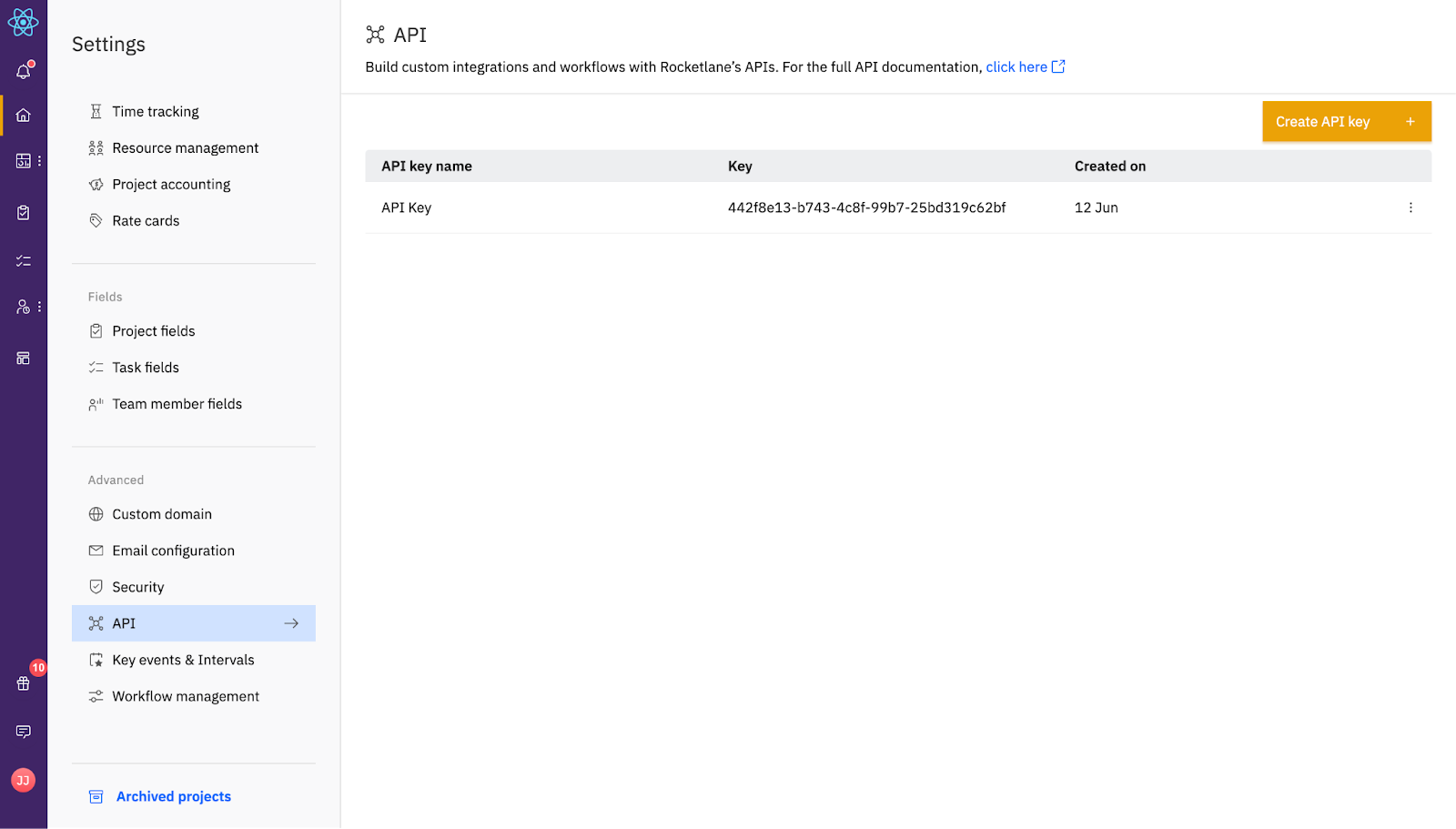Quick Start
Quick Start on the API Reference
Introduction
With the help of Rocketlane's APIs, you can update all the data in your Rocketlane instance and make sure that your team members have access to the most recent version of it. You may read, add, edit, and delete data for the various Rocketlane modules using this API Reference.
You can make straightforward queries like:
- Updating a task
https://developer.rocketlane.com/v1.0/reference/update-task - Searching for a project
https://developer.rocketlane.com/v1.0/reference/get-project - Searching for fields
https://developer.rocketlane.com/v1.0/reference/get-all-fields
You can perform Get, Post, Put and Delete requests on the data in your Rocketlane instance using these API references.
Brief OutlineRead through if you need a quick overview of Rocketlane's API:
- The API follows RESTful principles and uses HTTP methods to perform operations on resources. Although some API calls follow an RPC-like structure. The API allows queries with JSON or form-encoded content, and it returns JSON content with UTF-8 encoding for every response, including errors. The APIs can be accessed by endpoints using HTTPS through TLS 1.2.
- The API reference provides comprehensive information on the objects, schemas, and endpoints that are offered by the API.
- To authorise your API queries, generate an API Key from the API section in Settings from your Rocketlane account.
- The following basic URL serves as the API endpoint reference:
https://api.rocketlane.com/api- Pagination is strongly recommended for requests that will return multiple objects.
- In order to save resources and process requests more quickly, some requests return condensed versions of objects but you can add output options to customise your responses.
Prerequisites
The majority of the data pertaining to tasks, projects, templates, forms, and even time tracking is accessible programmatically using the Rocketlane APIs. The API uses built-in HTTP capabilities to use predictable URLs to access resources and respond to queries with JSON-formatted replies. If you are familiar with the REST principles, you may begin playing with the APIs within minutes.
Accessing the developer console
The Rocketlane Developer console should be accessed by the users to generate and delete API keys. Once generated, you can copy these keys and paste them on your API Reference page.
For more details read through the Authentication documentation.

Updated 8 months ago